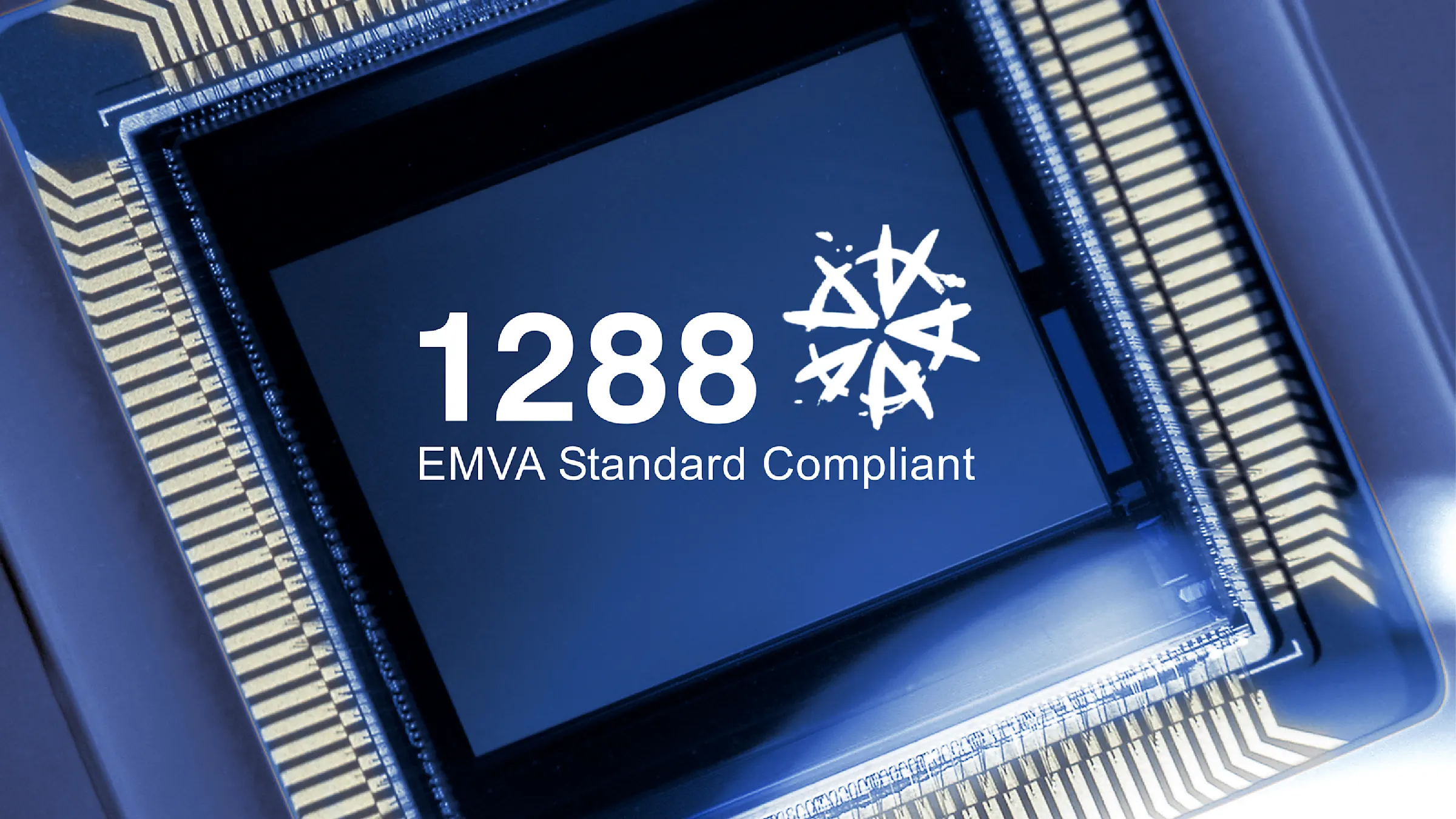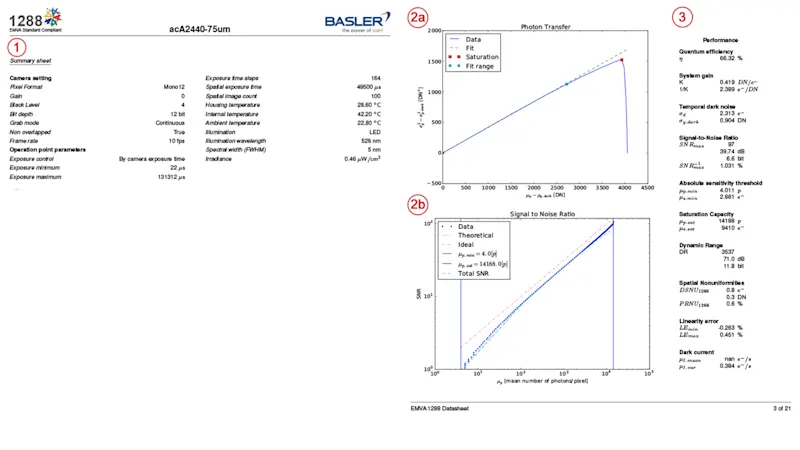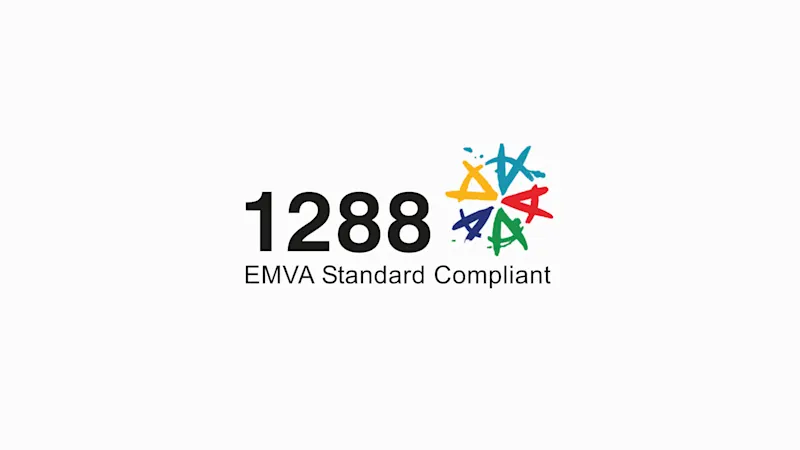EMVA1288 Standard
Image quality plays a decisive role when selecting an appropriate camera for a particular application or for the comparison of two camera models. However, the manufacturers’ data sheets can often be difficult to understand and compare, or potentially required information may be missing.

What is the best way to compare modern CMOS cameras?
In our white paper, we compare modern CMOS sensors by examining the performance of industrial cameras that use the same CMOS sensor.
What are the differences for the camera manufacturer when integrating new CMOS sensors?
What distinguishes effective CMOS sensor integration?
What role does EMVA data play in image quality?
How do I check firmware functions and data transmission stability?
How do price differences occur despite using the same sensor?
This is where the EMVA1288 standard from the European Machine Vision Association (EMVA) comes in. It uniformly specifies various parameters for image quality along with the corresponding measuring and representation methods. Since this standard was established, Basler AG has been a member of the associated committee and actively contributes to its further development.
The standard offers you various benefits. You no longer have to perform elaborate measurements on your own, for example, to assess the image quality of a camera or image sensor. Additionally, it is easy to compare various cameras even across different manufacturers.
EMVA1288 Standard – Release 3.1
To keep up with the dynamic development of digital image sensors, the standard is revised regularly. Release 3.1 is the result of the standard committee’s continuous optimization process and reflects the current state of technology. To make sure that you as a customer can benefit from all the advantages of this release, Basler will conduct all future EMVA measurements and test reports with it.
We would like to briefly introduce the most important contents:
1) Standardized EMVA Reports:
Compared to previous releases, this one no longer just defines the measuring methods but also specifies how the results are represented. Release 3.1 contains a template data sheet with a standardized summary page. On this summary page, you can find the most relevant data at a glance, namely:

[1] the Operating Point used for the measurements.
[2a] the Photon Transfer diagram to verify that the camera operates in a linear manner and that the EMVA1288 measurements can be applied to it.
[2b] the Signal-to-Noise (SNR) diagram in which it is possible to view the Absolute sensitivity threshold, Saturation capacity, maximum Signal-to-Noise ratio and Dynamic range.
[3] a list of the familiar EMVA1288 parameters.
As a central aspect of Release 3.1, the report is now designed to depict the measurement results of a single camera to enable a well-arranged and clear depiction of the data.
Basler will continue to capture EMVA1288 data during production to maintain its high quality standards. For the test reports detailed measurements in a separate test laboratory will be made.
2) Development of the quantum efficiency in dependency on the wavelength:
The quantum efficiency (QE) of a particular wavelength is often one of the most important criteria for the selection of a camera. Depending on whether you use your application with green light, red light or even in the infrared range, this will result in different QE values for the image sensors.
In the EMVA1288 standard only the measurement with a predefined wavelength is obligatory. Due to the technically demanding test set-up, a measurement of the QE development is optional.
However, Basler is convinced that these measurements offer you added value and will make the corresponding QE values available to you. This way we can ensure high reliability during your selection of the appropriate camera models.

3) New test setup:
A new test setup was created at Basler for measurements according to Release 3.1. It was calibrated with the help of a certified reference photodiode. As in any calibration, the usual tolerances from 3 to 5% apply. There is also a shift of the measuring point for the primary measurement from 545 nm to 541 nm. Therefore a direct comparison between the measurement results from Release 3.1 and those of the previous reports is not possible.

EMVA Reports
The EMVA reports give you a detailed list of the EMVA data for the desired camera.